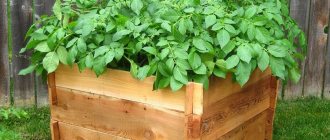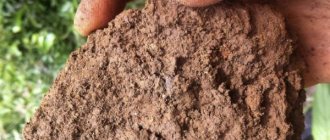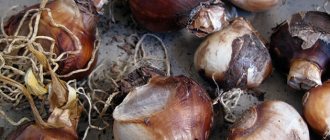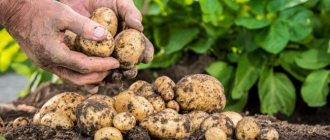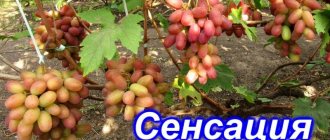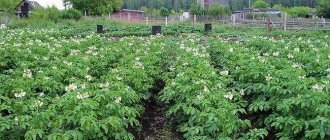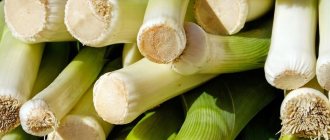Vegetable growing » Potatoes
0
1013
Article rating
Kira Stoletova
In order to get a plentiful and excellent-tasting potato harvest, it is not enough to simply plant it in the ground. It is necessary to carry out a number of agrotechnical measures in advance that will help create ideal conditions for growing this vegetable in the garden or dacha. Preparing the soil for potatoes is especially important.
Rules for preparing soil for potatoes
Features of soil for potatoes
The success of growing potatoes is largely determined by the soil. If soil fertility is easily increased by applying fertilizers, then parameters such as density and acidity can cause difficulties for a novice vegetable grower.
What kind of soil do potatoes like?
Loamy soil is most suitable for potatoes - quite fertile with a granular-lumpy structure, but good water and air conductivity.
The properties are similar to sandy loam. In its lightness and plasticity, such soil resembles sandstone, but it is more fertile, as it is able to retain mineral and organic substances.
A good harvest can be obtained on peat soils and black soils. Chernozem is the most fertile soil with a high content of humus (up to 15%), potassium, as well as organic and mineral compounds that allow the production of phosphorus, nitrogen, and sulfur. The structure is granular-lumpy.
Peat soils are not rich in humus; they quickly absorb water, but also quickly release it. They do not warm up well and often have high acidity. However, peatlands are easy to cultivate due to their ability to retain mineral fertilizers.
Less suitable than others for growing potatoes:
- Sandy soils are light and loose, but extremely poor in humus, so they need to be additionally enriched with nutrients. In addition, sand does not retain moisture well, and in the summer heat the tubers can “burn.”
- The main disadvantage of soil with a high clay content is its high density, which means impaired air and water exchange. In spring, alumina warms up later than other types, and melt water often stagnates on them. Clay soils most often have high acidity.
What soil acidity should be for potatoes?
Potatoes prefer a middle ground - soil that is not too acidic and not too alkaline. The ideal pH range is 5.1 to 6.0. Such soil is usually called slightly acidic.
Too acidic soil makes it difficult for vegetables to absorb nitrogen, potassium, magnesium, phosphorus and calcium. As a rule, such soil is very heavy, so the plant has difficulty accessing water, and the roots do not have enough space to branch well. In conditions of high acidity, pathogens actively multiply.
Alkaline soils are characterized by the presence of minerals in a poorly soluble form, so potatoes may suffer from deficiencies of magnesium, iron, boron and zinc. Alkaline soil reaction is typical for arid steppe and forest-steppe regions.
Care and harvesting
During the process of growing potatoes, it is necessary to harrow and hill up the soil several times. Harrowing is necessary primarily for loamy soils. Already five days after planting, the area is harrowed for the first time; further processing is best done after rains in order to prevent the formation of crust.
Inter-row cultivation is carried out as soon as the tops grow to 12-15 cm in height. The soil is loosened to a depth of 6-8 cm. This way you prevent the appearance of weeds and improve the penetration of moisture and air to the roots.
If we talk about the hilling process, its importance cannot be overestimated. Hilling helps prevent the growth of weeds, improves the circulation of moisture and air to the root system of the vegetable, and also increases yield due to an increase in the number of tubers. It is recommended to hill up the furrows when the tops grow to 15-20 cm. Repeat after about two to three weeks.
Soil treatment before planting
Spring cultivation of land for potatoes in open ground begins when the top layer dries out and warms up.
Before planting vegetables:
- The soil is dug up or loosened so that the soil is saturated with oxygen and the roots can develop faster.
- Remove weeds so they do not shade the furrows or compete with the potatoes for nutrients and water.
- Fertilizers are applied to improve soil quality.
How to plant potatoes correctly
When the land is ready for planting, you need to take care of the planting material. Tubers need to be planted not only in well-prepared soil, but also sufficiently warm and dried soil, otherwise they may freeze or rot. You can plant a whole tuber or divided in half. Before planting, potatoes should be carefully inspected and rotten or diseased tubers should be removed. Potatoes should look healthy, free from defects, mold and rot. Root vegetables weighing from 50 to 90 grams are ideal. Potatoes should be dried before planting. If you do not have enough material for planting, then the tubers can be divided, but in such a way that each segment has sprouted eyes. Divide immediately before planting.
Proper preparation of the soil for planting potatoes and preparing crops for planting are, let us remind you once again, the most important stages and this process should be considered in general.
How to determine soil type and acidity
The type of soil in a summer cottage depends on its density, moisture capacity, water and air permeability . To determine the mechanical composition, a lump of earth is moistened and rolled between the palms into a sausage. Sandy and sandy loam soil crumbles immediately - no shape can be formed from it. Clay soil and loam are plastic. To distinguish them from each other, the resulting sausage is folded into a ring: if it works, we have heavy alumina, but if the ring cracks, it’s loam.
The acidity indicator affects the mineral composition of the soil: nutrients in conditions of extremely high or low pH are either absent or are in a form that is difficult for plants to absorb.
The most reliable way to find out the acid-base reaction of the soil is to contact a specialized laboratory or use a kit for independent digital analysis. However, there are other methods.
Pros and cons of soil preparation
Under favorable conditions, potatoes grow normally in any soil, since they are not too demanding on physical indicators. But timely cultivation of the land will have a positive effect. With its help the following tasks are solved:
- air permeability and moisture permeability of the soil increases;
- dense areas in the upper layers of the soil are eliminated;
- many infections and bacteria die;
- without the use of chemicals, the roots of weeds are destroyed, which leads to their death;
- fertilizers are distributed evenly to all layers of the earth;
- all necessary conditions are created for mechanical planting, processing and harvesting of potatoes;
- qualitative and quantitative indicators of productivity increase.
The only drawback that can be identified is the high financial costs of equipment. But they are worth it, because less physical labor will be invested, and the result will exceed any expectations.
Features of soil deoxidation
For deoxidation, substances with an alkaline reaction are used:
- slaked lime;
- dolomite flour;
- wood ash;
- ground chalk;
- crushed eggshells;
- gazhu – sediments of lake-marsh reservoirs;
- nitrate fertilizers;
- ready-made complex preparations (“Uglemuk”, “Lime Gumi”).
The frequency and rates of alkalization depend on the initial pH, soil density and the amount of humus in the soil. On heavy clay soils, the deoxidation effect will last longer, so the preparations are applied in larger quantities, but at intervals of 5-7 years.
Reference. Green manure plants also help level out acidity: vetch, phacelia, rye, lupine, oats, and legumes. However, the site needs to be sown with them in advance - during the autumn soil preparation.
When do potatoes need organic matter?
Organic fertilizers are more beneficial for soil. They improve its composition and increase friability. The soil recovers faster when organic matter is added. The most popular organic fertilizers are:
- cattle manure - mullein;
- chicken manure, which contains the highest nitrogen and potassium content;
- green manure plants that are introduced into the soil for digging.
Ash and bone meal are also useful, but they must be added in large quantities, which are not always available. For example, you need 5 kg of ash per hectare of land . To get 5 kg you need to burn 110 kg of rye straw . And this is for one hundred square meters. Considering that rye straw is deficient, it will be difficult to provide sufficient nutrients.
Mullein
Mullein is the most accessible of all organic substances. It can be applied for digging when preparing the soil for potatoes in the fall, so that soil microorganisms process the substance by spring. Another way is to make compost. To do this you need:
- organize a place where the compost will ripen - a burst, pit or container;
- layer manure, soil, food waste from the kitchen, ash, chalk, weeds;
- to speed up ripening, you can add liquid containing beneficial bacteria - Baikal;
- wait 8 – 9 months .
Manure can be mixed with compost.
During this time, a reaction occurs inside the pile. The temperature rises to 75 degrees . In this case, all harmful bacteria and parasite larvae die. The finished compost should smell like earth, be loose and moderately moist.
The downside of manure is the complete absence of phosphorus, so it is recommended to apply it separately before planting potatoes in the fall.
Bird droppings
The nitrogen and potassium content in chicken manure is the highest. It is also added to the soil in the fall or composted. The rules of use are the same as for mullein.
White mustard
White mustard is planted on the plot after harvesting. The seeds have time to germinate and gain nutrients. The mustard is cut or simply dug up with soil. In addition to mustard, other plants are used - phacelia, vetch. Infusions of green manure are used for foliar spraying against pests.
How to acidify the soil
If the soil reaction is closer to alkaline, organic fertilizers are added to it: compost with the addition of rotted pine needles and sawdust, high peat, fresh manure.
Organic matter delicately acidifies the soil, additionally making the soil looser and more breathable. If you need a quick result, use mineral compounds: ferrous sulfate, ammonium nitrate.
Reference. Colloidal sulfur significantly lowers pH, but acts slowly, so it is applied mainly during autumn digging (100 g per 1 sq. m). Also come with ammonium sulfate and potassium sulfate.
What kind of soil do potatoes like?
To cultivate potatoes, you need soft, loose and well-ventilated soil. There are ideal soils, but more often special preparation is required. Loams or sandy loams are suitable for the crop. An excellent harvest can also be achieved in peat and black soil areas.
Clay soil is not suitable for growing vegetables. It is not difficult to determine this type of soil: during rains or melting snow, water stagnates in it.
It is not recommended to plant vegetables on sandy soil. True, on such a plot of land you can also get a good harvest if you carry out the preparatory work correctly and provide increased care.
Strawberries at home all year round! These veneers are 100 times better than false teeth! And they cost pennies! Up to 15 kg of strawberries every month! Dental veneers for pennies! Up to 15 kg of strawberries every month! The famous overlay veneers are now in Russia!
Ways to improve soil quality
Knowing the characteristics of the soil, you can significantly improve its quality:
- lighten or tighten;
- enrich with humus;
- correct mineral imbalance.
Fertilizers
Fertilizers are divided into organic and mineral. The former are valued for their naturalness, ease of absorption, and rich chemical composition. Mineral mixtures are good when you need to add one or more substances in a certain dosage.
When planting potatoes, first of all, nitrogen-containing compounds are used, as they accelerate the growth of green mass in plants:
- fresh or semi-rotted cow manure;
- compost;
- urea (carbamide);
- ammonium nitrate;
- complex mineral fertilizers (“Ammophos” and “Diammophos”).
However, the most important element for potatoes is potassium, and it is better in sulfate form. In turn, potassium is well absorbed if used in conjunction with phosphate fertilizers: phosphate rock, simple and double superphosphate, as well as in the form of combined mixtures - “Nitrophoska” and “Nitroammofoskie”.
Reference. These fertilizers are applied evenly over the area of the area for digging or directly into the hole during planting.
Green manure
Green manure is used:
- to repel pests;
- for soil improvement;
- to enrich the soil with useful microelements.
In spring, sowing of green manure begins immediately after the snow melts. For this purpose, cold-resistant plants are chosen, since they must sprout in low temperature conditions, and by the time the potatoes are planted, they must already have mature shoots. Mustard, rapeseed, rye, oats, and phacelia meet the stated requirements. If you plan to grow green manure at the same time as potatoes in the inter-rows, the choice falls on legumes, calendula and nasturtium.
To repel insects and prevent diseases, mustard and colza are used against wireworms and late blight, and flax against the Colorado potato beetle.
Reference. The ideal spring green manure before planting potatoes is phacelia. It is frost-resistant, loosens the soil well, increasing its breathability, reduces soil acidity, helps in the fight against root-knot nematodes, repels locusts, suppresses the spread of root rot and late blight, and displaces weeds.
Disinfection
To protect potatoes from pathogenic fungi, bacteria and viruses, tubers and soil are treated:
- a weak solution of potassium permanganate;
- copper sulfate;
- boric acid;
- Bordeaux mixture;
- ash.
For more reliable protection, industrially produced fungicides are used: Fitosporin, Quadris, Maxim, Immunocytofit, Prestige and others. When using them, you must follow the directions on the package exactly and do not exceed the recommended dose.
Ash
Ash is an excellent fertilizer of natural origin. It has an impressive chemical composition, in which calcium and potassium occupy a special place.
The main purpose of ash before planting potatoes is to increase the plant’s resistance to various diseases and to disinfect the soil. Good results are obtained by applying fertilizer directly into the hole.
Attention! Ash does not combine well with fresh mullein, so it is better not to use them at the same time. But it is effective in combination with peat and compost.
Loosening
Potatoes love loose, oxygen-filled soil. In such conditions, nothing interferes with the development of its root system and the formation of large tubers.
Loosening the soil before planting potatoes should be thorough - to a depth of 15 to 30 cm. It is advisable to loosen alumina and loam in two steps to avoid stagnation of water. The area is dug up to the depth of a spade bayonet, then the clods of earth are broken up with a rake.
Reference. Sometimes ordinary loosening and digging is not enough. Then the heavy soil is lightened by adding sand, crushed sifted bricks, and plant residues burned together with the soil.
What is the best way to prepare beds for planting?
Preparing the soil for potatoes involves both basic (autumn) and pre-planting (spring) cultivation.
Do you need to plow your garden in the fall?
Autumn processing is carried out in the summer-autumn period.
With this treatment: In semi-arid and arid regions, the soil is peeled (partially turned and mixed) to a depth of 5-8 cm. This should be done immediately after harvesting the previous crop. For this purpose, disc harrows are used. Peeling helps to destroy weeds, create a loose surface layer of soil (especially effective after harvesting crops that heavily compact the soil) and level the area. 2-3 weeks after peeling, the area needs to be plowed to the depth of the arable layer. To prevent soil compaction on sod-podzolic loamy soil after autumn plowing, it should be loosened, that is, pre-cultivated. In areas of the Central Chernozem territory, it is permissible, together with moldboard autumn cultivation (the layer is partially or completely turned around), to loosen the soil without moldboard. In the South-East of the country, in areas prone to wind erosion, deep non-moldboard cultivation is used (soil layers are not subject to significant movements). By carrying out autumn plowing at an earlier date, it is possible to increase the potato yield to 25 centners per hectare. In the autumn, fertilizers such as manure and compost are applied. This is done in order to achieve their best decomposition. In areas of insufficient moisture, all mineral fertilizers are plowed in in the fall. Green fertilizers (seradella, lupine), which are also called green manures, are sown during the development of new lands or on depleted areas to increase their fertility immediately before sowing potatoes before winter
They have the ability to absorb nitrogen from the air. Important! In addition, by plowing green manure, the soil can also be enriched with phosphorus, potassium, calcium and other nutrients. The powerful roots of green manure bring them out of the deep soil horizons.
The use of chemicals to destroy weeds is justified in large fields
In small areas, herbicides are rarely used, only if mechanical methods of weed control have proven ineffective. To prevent late blight, the soil is treated with copper preparations (but not more often than once every 5 years). This is done in the fall, immediately after digging or loosening the soil.
What should be done in the spring?
Pre-sowing treatment (spring) involves:
- Preservation of moisture accumulated during autumn-winter.
- Creation of a loose, finely lumpy topsoil layer.
- Weed control.
- If the soil is sufficiently moistened in the spring, it is worth applying nitrogen fertilizers for plowing.
- Pre-sowing treatment methods differ in different soil and climatic zones. This is how fields in the Non-Black Earth territories are cultivated or harrowed. Then plowing is carried out to a depth of 17-20 cm, which is combined with spring application of fertilizers.
- On light sandy soils and in dry years, plowing should be replaced by cultivation to a depth of 12-14 cm. In the forest-steppe and steppe zones in the spring, the soil is loosened with a cultivator 1-2 times.
How to choose the right place to grow potatoes on your plot
When choosing a place to organize potato furrows, take into account:
- Illumination of the area. Potatoes love light. In partial shade and shade, the tops develop slowly, and the tubers are small and in small quantities.
- Humidity. Vegetables cannot be planted in soil with stagnant water - the seed will rot before it has time to start growing.
- Protection from winds. Preference is given to areas planted on the north side with trees or shrubs. This will protect the soil from erosion and the plantings from hypothermia.
Variety selection
Purchase a variety based on taste, ripening time, disease resistance and adaptation to local weather conditions.
Remember that culture degenerates over time: the super-elite is able to grow in one area for 6 years; elite 5, the first reproduction is up to four years old, and the second is only 3 years old.
Therefore, for a consistently high yield, it is necessary to select tubers for seeds when harvesting directly in the garden bed. This takes into account the number of tubers per bush, healthy tops and the shape characteristic of this variety.
Planting potatoes, methods, general recommendations
Smooth or “shovel” fit
The reliability and simplicity of this method lies in planting potatoes in specially dug holes, no more than 20 cm deep. Before planting, compost infusion in equal parts of mixed humus and ash is poured into the holes, the tuber is laid with the sprouts facing up and buried. The row spacing should be left 40-50 cm for ease of movement.
Planting potatoes using the Mittleider method
The soil is prepared in advance so that it has time to absorb a sufficient amount of nutrients. The area is dug up and fertilized. The beds for plantings are formed in such a way that the potatoes are not crowded, and the potato sanitary control zone is always visible. The optimal distance between the beds will be 60 cm. Holes 13 cm deep are formed in the soil and fertilizers are added. Potatoes are placed in holes 30 centimeters apart and buried. Humus is applied at a distance of 8-10 cm from the intended sprout to avoid burning the plant. Care consists of timely weeding of the garden and loosening the rows, and hilling up young plants with a mound of small scallops to retain moisture.
High yield or Chinese method of planting potatoes
One of the new methods that uses all possible and impossible ways to stimulate potato growth. The complexity and cost of this method prevents it from becoming a leader among the rest.
Tubers are planted using the nesting method, at a distance of a meter from each other, in ridges or holes prepared in advance in the fall with added growth fertilizers. The tubers are also prepared by making an incision and treating them with a rot disinfectant. This is done to awaken the tuber and conceive additional sprouts. Potatoes sprouted for one and a half weeks are planted in open soil heated to 10 degrees. The tubers are covered with a prepared mixture of chernozem (40%), mulch treated against parasites (10%), humus (20%) and sand (30%).
Fertilize with phosphate-magnesium fertilizers throughout the entire growing season of potatoes, and when the first sprouts appear, add potassium weekly, alternately with magnesium. This method of planting potatoes cannot be limited to small doses of fertilizers, so it is one of the most expensive.
When the potato tops reach 20 cm, compost is added to the soil in small doses so as not to provoke the growth of green mass and wilting of the tubers. After marking the tops at 30 cm, the lower leaves are removed, and the flowers are removed after pollination. Spraying the soil with fertilizers continues until the potato tops dry out.
Square nest method
The prepared area is formed into 70x70 cm squares, then 30x30 cm depressions are dug in the corners of the square and fertilized with compost. Pre-sprouted and treated for parasites potatoes are placed in the prepared holes and covered with black soil mixed with sand in equal parts. Place 5-6 kg in the middle of the square. humus, while watering plants, there is a gradual natural absorption of nutrients by the plant.
Planting potatoes in barrels
To save space in your garden, you can plant potatoes in barrels
When planting, pay attention to the soil, mix chernozem, sand and humus in equal parts. Pour the prepared soil into the barrel, form holes and plant potatoes
The method is convenient because it simplifies control over the condition of the plant.
Landing on the ridges
This method of planting potatoes in ridges, proven over the years, is suitable for northern latitudes. A high bed (ridge) is poured, a 20 cm depression is formed inside, and potatoes can be planted. The soil is fertilized throughout the entire potato growing season with potassium fertilizers and covered with a thin layer of mulch.
Planting potatoes under black film
An interesting way to plant potatoes is to spread black film over the treated area, after adding fertilizer to the soil. Cover the area in the fall. Due to lack of sunlight, weeds die and do not grow. In the spring, cross-shaped cuts are made in the film, holes are dug and potatoes are laid; when sprouts appear, the film is removed.
Conduct autumn preparation
In the fall, the following work needs to be done:
Remove plant debris from the field This is especially important if potatoes are grown in one place for two or more years in a row. All tops are collected and transported
But it is better to remove and dispose of other residues or put them in a compost pit. If a lot of weeds have grown, it is better to remove them by the roots. You shouldn’t just mow down large stems; it’s better to remove them properly so that the seeds don’t ripen and scatter.
Treat against weeds If there is a lot of weeds on the site, it is better to use a special composition in the fall. Roundup is the most popular among gardeners, but there are many other products with a similar effect. Prepare the solution and apply it according to the instructions. This is a chemical product, so it is necessary to use protective equipment when using it.
Sow with green manure This will increase productivity due to saturation with useful substances. There are many crops, you can use any, the main thing is that there is at least a month before the cold weather and the plants have time to grow a little. You can also sow in advance. But in this case, before plowing, you will have to mow down the vegetation so that it does not interfere with work
Plow the area before the onset of cold weather. Plowing depth is approximately 25 cm. It is important to cover the green manure with a layer of soil so that it rots there and saturates the soil. Small areas are simply dug up. Processing depth - on the bayonet of a shovel
Pre-sowing tillage in spring
Spring work begins when the soil freezes and dries. Delaying the processing time leads to large losses of moisture and the formation of a dense crust on the soil.
If the soil is too wet, strong compaction and insufficient loosening are inevitable.
To determine the readiness of the soil, you need to squeeze the lump in your hand and drop it from a distance of 1.5 m.
Signs:
- the lump has flattened, moisture has seeped out of it - the soil is not ready;
- the lump has crumbled evenly - you should start harrowing;
- the lump is not pressed in the hand, the soil is very dry - it is necessary to spill it with water.
After water-recharging irrigation, the soil should dry out a little before harrowing.
Plowing
Many farmers prefer to till the soil in the spring. It involves less labor - there is no need to re-loosen the soil before planting potatoes. But there are huge disadvantages here.
With heavy rainfall, the physical ripeness of the soil has to wait a long time. This delays the planting of potatoes.
Processing wet soil leads to the formation of blocks, the destruction of which requires significant effort. The lower layers of the earth are strongly compacted under the pressure of technology.
During spring plowing, the soil dries out greatly, and if there is no rain after the seedlings emerge, the need for watering arises.
Spring plowing is justified on sandy loam and sandy soils that warm up quickly. The plowing technology is the same as in the fall.
Harrowing
Harrowing the soil destroys its dense layer and interrupts the capillaries through which moisture actively evaporates from the lower layer. This is called "moisture sealing." The earth warms up and ventilates faster.
Loamy soils are best treated with heavy toothed harrows, sandy loam and sandstones with needle rotary harrows. They are attached to a walk-behind tractor or a tractor. The optimal speed is 6-7 km/h. Small areas are treated with a hoe or a toothed ripper.
They harrow obliquely at an angle of 45° towards the plowing lines (towards future ridges). Then it is processed again, this time at an angle of 135° to the plowing lines.
Cultivation
Cultivation - loosening the soil to a depth of 12-16 cm without turning over the loosened layers. This prevents pathogens and weed seeds embedded deep into the soil from reaching the top layer.
Cultivation is combined with the application of mineral fertilizers. Use the entire complex of fertilizers according to the requirements of potatoes, if they were not applied in the fall. Nitrogen fertilizers are always added in the spring.
In small areas, cultivation is carried out with a notched hoe, hand cultivators or forks, while simultaneously incorporating fertilizers into the soil and leveling the surface. For large areas, a chisel cultivator or plow is used.
Comb cutting
Soil aeration improves in the ridges, potato roots develop well and form a large number of new embryos. The technology is used on loamy and heavy soils. On sandstones and sandy loams, the crop is planted on a flat surface, to a depth of 6 cm.
When planting early varieties of potatoes, cutting the ridges is done in the fall. Spring cutting - 5-7 days after cultivation.
In large areas, the ridges are cut with six- and eight-row cultivators with row spacing of 70 cm. In small areas, mini-equipment is used or the ridges are cut with a shovel.
The height of the ridges during autumn cutting is at least 25 cm, and during spring cutting - 15-17 cm. Before cutting begins, poles are installed as a guide.
Herbicides
The use of chemicals to destroy weeds is justified in large fields. In small areas, herbicides are rarely used, only if mechanical methods of weed control have proven ineffective.
Before planting potatoes, the soil is treated with pre-emergence preparations. The products are toxic to weed seeds and prevent their germination.
Preparations:
- "Roundup";
- "Antiburian";
- "Gezagard";
- "Boxer".
Substances can be applied in the form of granules (embedding depth 5-10 cm) or in the form of an aqueous solution. The instructions for each drug indicate the maximum and minimum doses depending on the types of soil and weeds.

